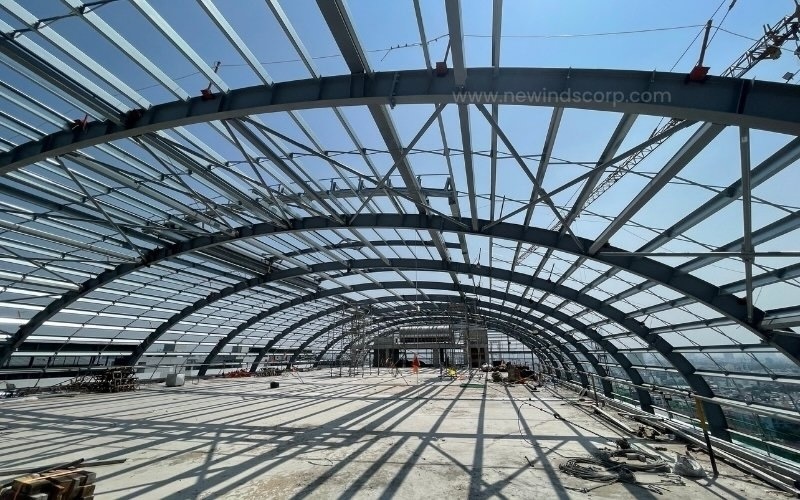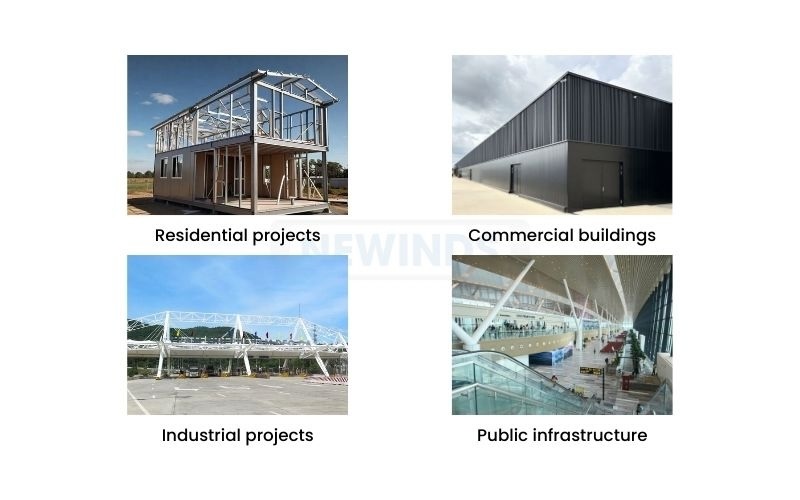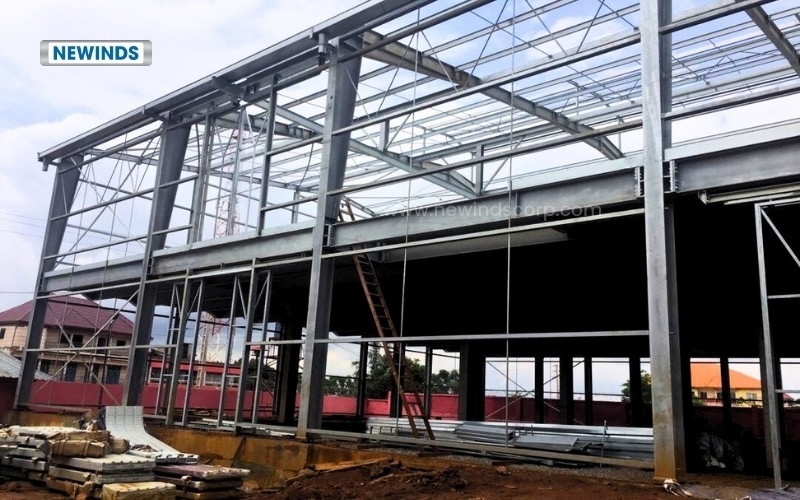Selecting the suitable structural material is an important part of any residential or commercial project. Steel frame, timber, and concrete each have their own advantages and disadvantages. With the growing preference for efficient and sustainable solutions, this steel-based solution has become a popular choice. In this article, we compare it with timber and concrete and explain why it could be the right option for your next project.
What is a Steel Frame?

A steel frame is a structural system made of vertical steel columns and horizontal beams, forming a skeleton that supports the entire building, including floors, roof, and walls. This solution creates a strong framework with high load-bearing capacity while resisting harsh weather conditions and termites.
In recent years, this construction method has become a preferred choice for clients aiming to meet the growing demand for sustainable and cost-efficient buildings.
Applications of steel framing
- Residential projects
- Commercial buildings
- Industrial projects
- Public infrastructure

Comparing Steel Frame to Timber and Concrete
| Criteria | Steel Frame | Timber | Concrete |
| Strength | Yield ≈ 345 MPa, high load capacity, termite- and rot-proof | Bending ≈ 24 MPa (C24 softtimber), vulnerable to pests and moisture | Compressive ≈ 28–35 MPa, very strong but brittle in tension |
| Durability / Termites | Long lifespan; immune to termites; requires corrosion protection | Susceptible to termites, rot, warping | Resistant to pests, may crack without proper detailing |
| Cost | Higher upfront, often offset by faster build & lower labor | Low upfront, higher life-cycle maintenance | Moderate, but slower schedule adds indirect costs |
| Time | Prefabricated, fast on-site assembly, no curing | Moderate, weather-sensitive carpentry | Slow, formwork + ~28-day curing |
| Sustainability | Highly recyclable, near 100% reusability | Renewable, stores biogenic carbon | Lower CO₂ per kg than steel, footprint varies by mix |
| Spans & Layout | Beams ~18 m, trusses ~50 m → fewer columns, flexible design | Shorter spans, needs more supports | Long spans possible, but heavy structure |
| Thermal Performance | High conductivity (45–60 W/m·K) → needs insulation breaks | Naturally insulating (~0.12 W/m·K) | Medium (1.4–1.8 W/m·K), good thermal mass |
| Fire Resistance | Non-combustible, strength drops at high temps → needs protection | Combustible, char layer slows fire spread | Non-combustible, strong inherent fire resistance |
Key Benefits of Steel-Framed Construction

- High strength and durability
- Faster construction
- Design flexibility
- Fire resistance
- Sustainability
How to Find a Reliable Steel Frame Supplier
Beyond choosing the right material, selecting a supplier is equally important and not something to overlook. A reliable supplier can ensure your project is completed as expected. Key factors to consider when choosing a supplier include:
- Certifications and Standards: Look for suppliers that comply with recognized standards (ASTM, ISO or local building codes).
- Quality of structural components: Ensure columns, beams, and connectors are tested for strength, corrosion resistance, and fire safety.
- Experience and track record: Reputable suppliers with proven projects provide greater assurance of reliability.
- Transparent pricing: Clear quotations without hidden costs help prevent future budget issues.
With over 17 years of experience, Newinds has become a trusted partner for clients in more than 15 countries. We focus on precision, quality, and efficiency in every stage of metal fabrication, delivering reliable, tailor-made solutions that meet your project requirements – from small-scale to large-scale projects.
FAQ
1) Is a steel frame cheaper overall than timber or concrete?
Yes, over the long run. Steel may cost more upfront than timber, but it saves money with faster build time, fewer workers, and lower maintenance.
2) Can steel framing be built faster than concrete?
Yes. Steel parts are prefabricated and installed quickly on-site, while concrete needs formwork and curing for up to 28 days.
3) Will a steel frame rust?
No, not if it is properly protected. With thorough coating methods such as galvanizing or industrial-grade paint combined with regular maintenance and inspections corrosion can be effectively prevented, ensuring the structural strength remains intact for decades.
4) Is a steel frame safe in fire and earthquakes?
Yes, Steel does not burn, but it loses strength at very high temperatures. To ensure fire safety, protective measures such as fireproof cladding, intumescent paint, or spray coatings are typically applied.
When properly designed and constructed according to earthquake-resistant standards, steel structures can perform very well in seismic events thanks to their ductility.
5) Are steel frame homes energy-efficient?
Yes, when insulated properly. With thermal breaks and good insulation, houses built with steel framing can meet or exceed modern energy standards.